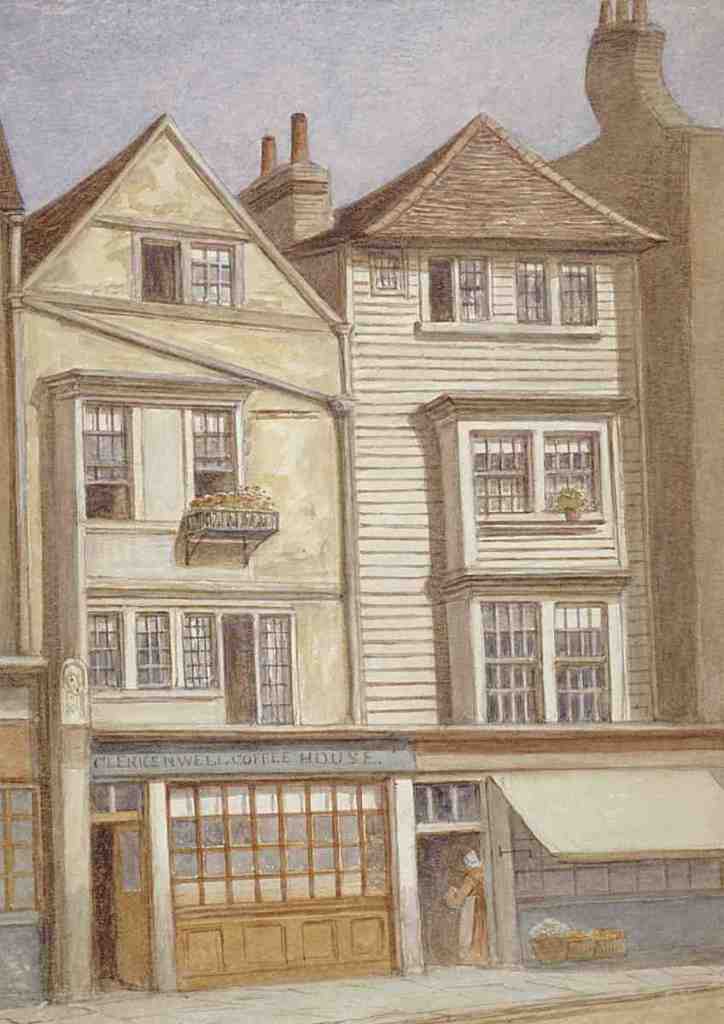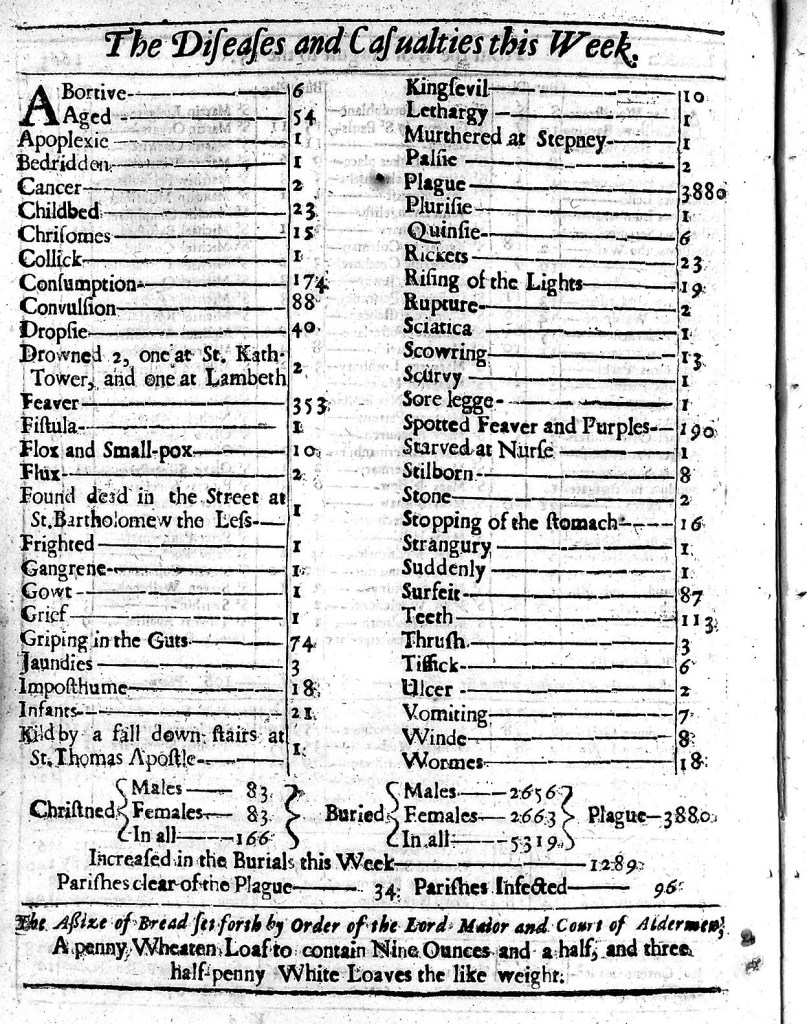A shadow fell over London in 1665 – dark days that historians have sought to illuminate ever since. Samuel Pepys wrote the most famous eyewitness account of the Plague year. But it is a lesser-known diarist we turn to for evidence that amid the death and desperation that racked the city – killing up to 100,000 Londoners – an event occurred which reveals the city’s febrile dimensional nature: The Clerkenwell Attic Miracle.

John Cole’s diaries might be known even without the strange, sad tale they tell. A fabric tradesmen living in Clerkenwell with his wife Johanna and their two children, he possessed a level of literacy rare for someone of his modest social standing.
The years leading up to 1665 were happy times for the Coles. John’s diaries, now kept at the London Metropolitan Archives, are alive with tales of family life, from Johanna’s way with a song to their daughter Ann’s mean game of skittles. One touching sequence tells of the blackbird chick that Ann’s younger brother Thomas rescued from an open sewer. He christened the bird Peter, and with the help of their pet cat, Inky – who treated the bird like a kitten – nurtured it to adulthood.

As 1665 draws on, things take a darker turn. Cole recounts the beginnings of the ‘sicknesse’, its march across the parishes. He watches his wealthier neighbours clear out for the countryside, wanders streets empty but for the dead and those disposing of the dead. Business suffers, his shop closes, the cupboards become scarce of food.
On the 3rd September Johanna is taken ill. John describes with unflinching clarity the onset of the disease. Whether their trade in fabrics brought her into contact with the plague-carrying fleas which we now know travelled to England by sea on the backs of rats, we’ll never know.
What we do know is the horrifying events that followed.

Daniel Defoe, in his fictionalised account A Journal of the Plague Year, told of the practice of shutting-up the houses of the infected, so that neither they nor their family could leave.
Someone must have informed the authorities of Johanna’s illness, because on the 4th September armed watchmen came to their door, crossed it with paint, locked it shut, and took guard outside. According to the practice, after a month the doors would be opened – by which time the occupants would either be cured or dead.
But the Coles didn’t last that long.
John writes that his and Johanna’s cries that day might have been heard as far as Oxford. They did not wail for themselves. They begged and pleaded for the release of their two children. To no avail.
The subsequent pages of John’s diary are a dismal account of life in the prison which was once their home.

Johanna, her bed made up on the ground floor, descends rapidly towards an agonising death. John, too, soon shows signs of the illness: the telltale, blood-red rings known as ‘tokens’ mark his skin. Certain that the intense fever, gasping breath, vomiting and pain affecting his wife will soon catch up with him, he focusses on the safety of their children.
Besides praying to God, which by his own account he does plenty of during that fateful week, there isn’t much John can do. On the fourth floor, in a small attic room, Ann and Thomas live behind a closed door – the hope being that in this way they are protected from the bad air or ‘miasma’ that was then thought to carry the plague.
Each day, John climbs the stairs to pass on food that the watchmen bring, and speaks briefly through the attic door to his children.
It is in these conversations that the mysterious events unfold.

The children tell their father that they spend their days and nights looking out at their small gable window. They say they have seen Inky – who seems to have disappeared around the time Johanna took ill – watching over them from the opposite roof. They have seen birds alight frequently on the sill, and Thomas swears Peter has been among them. And at night, in the street below, as the watchmen stand oblivious in the shadows, they have seen spirits, or ‘silver ghosts’, rushing past their doorway in hidden ritual.
But the stories get weirder still.
As their candle flickers at night, strange, flittering shapes are thrown upon the attic wall. And night by night, a larger form has been emerging from the shadows.
There are some who say these pages are evidence of John’s deteriorating health. For his part, he doesn’t question the tales. He is focussed – besides prayer – on the practicalities of his children’s health. He asks them continuously whether their skin shows signs of plague. He tells them plainly that their mother is dead, that soon he will be too, and begs them to wait as long as they can, after he stops coming, before they leave the room in search of food.

The last time John speaks to his children, they tell him that the shadows in the wall have taken shape, that in the night a boy in a ‘physician’s mask’ came and told them that before the sickness reached them he would return with friends to take them somewhere far away.
John’s final entry is largely illegible, but he bemoans the “last packe of candles” and continues to pray for his children: “Up wards, to God… salvation, my birds… beside Hime… God heare me”
Parish records show that when the Cole house was cleared, it contained two dead, and no survivors.
- Candidate: The Clerkenwell Attic Miracle
- Type: Gateway
- Status: Historic

Another cracker. I enjoy these tales. Thank you .
LikeLike
Thanks, glad you liked this one.
LikeLike
Really love this story. Keep them coming!
LikeLike
I like them all. Brilliant writing.
LikeLike
Thank you!
LikeLike
I love this story. Keep them coming!
LikeLike
Thanks!
LikeLike